





























Published by
Active Media Publishing Group
PO Box 672, Aurora, OR 97002
info@ActiveMediaUSA.com 503.825.2111
ADMINISTRATION
Matthew Nelson, Publisher Catrina Nelson, CFO
Tara Weidman, Executive Assistant
Raeann Van Arsadall, Business Development
PRODUCTION
Jeremy Okai Davis, Art Director
Donovan Darling, Creative Project Manager
Brittany Jungenberg, Director of Marketing
Kate Astle, Copyeditor
Kaity VanHoose, Social Media Manager
SENIOR GRAPHIC DESIGNERS
Hilary Berg Sean Carver
Brittany Jungenberg Morgan King
Shawn Schmidt
GRAPHIC DESIGNERS
Dani DeGraw, Justin Nelson, Kaity VanHoose
CONTRIBUTING WRITERS
Patti Jo Brooks Olive Gallagher
Angie Helvey Lucas Holmgren
Robert Matsumura Dennis McNabb
Peter Murphy Edward Novak
Malia Riggs Kelly Romo
Gretchen Van Lente Ty Walker
Alice Williams Justin Woomer
Kerry Yu
CONTRIBUTING PHOTOGRAPHERS
Laurel Bice Carly Carpenter
Tyler Francke Angie Helvey
Brittany Jungenberg Malaina Kinne
Lisa Kuhlman Kara Langley
MJ Media Productions Andrew Sambuceto
Henry Schifter Hayley Starkey
ADVERTISING SPECIALISTS
Don Ormsby Bill Kistler
Stephanie Baker Peggy Jacobs
David Long Chris O’Brien
John Zobrist Brad Marti
Shelley Zeman Tina Toney
Darren Dwyer Lynnette Scott
Looking to reach local consumers?
We specialize in direct-mail products: community magazine advertising, mailing inserts, postcards and more. For more details, call 503.825.2111 or email info@ActiveMediaUSA.com
DEC 2024 / JAN 2025
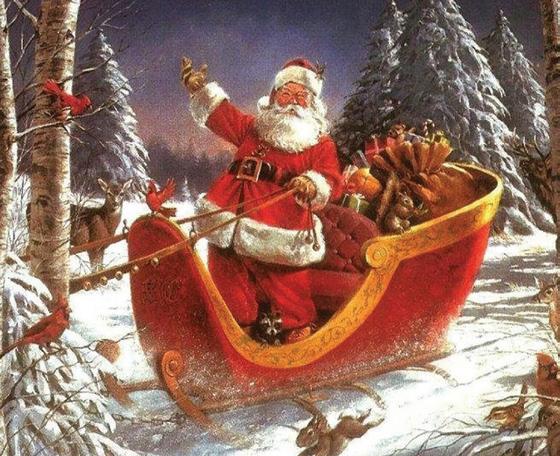
CHECK US OUT ONLINE AT CommunityAdvantageMagazines.com 8 ART EXPRESSIONS Jenny Ellsworth


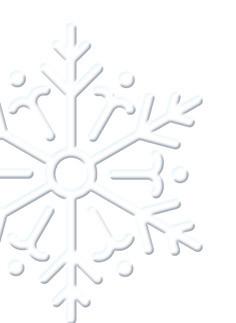












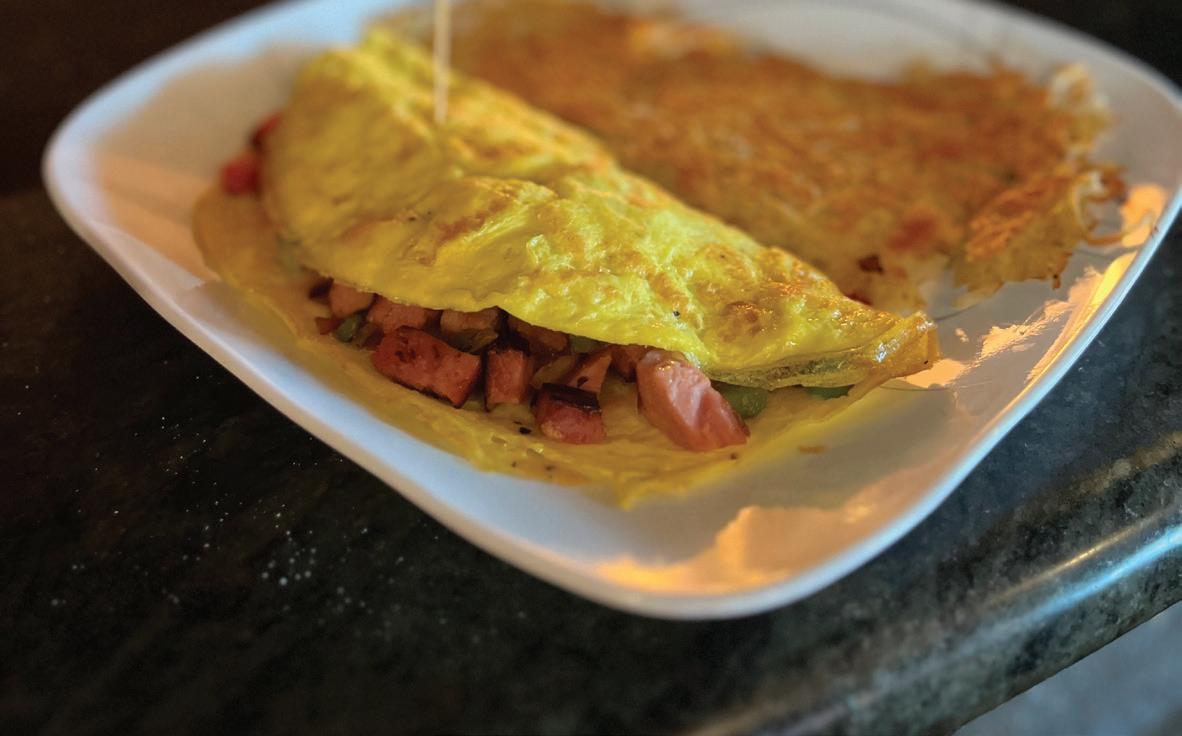








By Robert Matsumura, Active Media
As the holiday season rolls around, Santa Claus assumes center stage. But where exactly did this rotund, jovial old man in a red suit originate, and how did he become the iconic symbol of Christmas that he is today? In truth, the history of Santa Claus is a fascinating tale that intertwines folklore, legends and a sprinkle of entrepreneurial ingenuity.
Santa Claus as we know him today traces his roots back to a number of historical figures, each contributing to the contemporary version we know and love. Perhaps the earliest inspiration for Santa Claus was Saint Nicholas, a Christian bishop of the 4th century, renowned for his acts of kindness and gift-giving. In time, Saint Nicholas became the patron saint of children, sailors, merchants, archers and brewers, among others.
In the British Isles, a character known as Father Christmas emerged during the mid-17th century and was frequently depicted as a bearded man garbed in green, symbolizing the spirit of the season. By the 18th century, however, the concepts of Father Christmas and Saint Nicholas merged, resulting in a hybrid figure that blended elements from both traditions.

The American version of Santa Claus began to take shape in the 18th century. Influenced by Dutch and German settlers, the name “Santa Claus” evolved from the Dutch term “Sinterklaas.”
During this period, “A Visit from St. Nicholas” (commonly known as “The Night Before Christmas”), a poem published in 1823, played a pivotal role in shaping the modern image of Santa. This poem described Santa

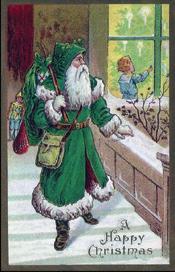
as a rotund gift-giver in a red suit who utilized chimneys rather than the front door for his Christmas visits. The poem, attributed to Clement Clarke Moore, established not only Santa’s magical nighttime journey around the world delivering toys to children, but specified his vehicle of choice as a sleigh powered by eight reindeer with specific names and attributes. Also introduced in the poem was the idea of Santa monitoring children on his “naughty and nice” list and filling stockings accordingly.
The classic image of Santa Claus in a red suit with a white beard was tweaked further in the 1930s due to a marketing campaign by Coca-Cola. The company’s advertisements depicted Santa as plump, rosy-cheeked, and garbed in a red and white outfit and hat. Although Santa had been portrayed in robes of other colors prior to this marketing campaign, CocaCola’s version of Santa Claus was embraced by the popular imagination and remains the image we associate with him to this day.

As the holidays roll around, and images of Santa Claus abound, know that, like so many things in life, Santa has evolved from his ancient origins as Saint Nicholas and Father Christmas to the iconic figure of Christmas cheer crafted by an imaginative poet and creative corporate advertising. One thing is for certain, whether you’re a child or an adult, the holidays would not be the same without Santa, his reindeer and the spirit of the season that he represents to so many around the world!



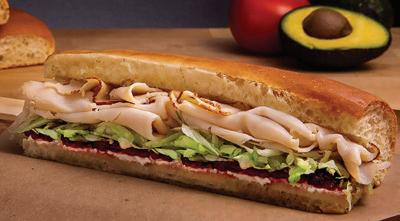





By Kelly Romo, Active Media
Jenny Ellsworth’s journey into the world of metalwork began in an unexpected place: off-roading. While learning to build roll cages and bumpers, Jenny was captivated by the process of bending and shaping metal. The tactile experience of welding — the sound, the smell, and the quick, powerful way it bonds materials — sparked a passion that quickly evolved into her life’s calling.
Initially, Jenny focused on metal fabrication for commercial properties, where she often witnessed significant waste. Seeing usable scrap discarded made her think creatively about giving these materials a second life.

She began crafting art pieces from salvaged materials, and what started as a personal project soon gained the attention and admiration of her friends. Encouraged by their enthusiasm, Jenny held a garage sale, where her pieces were met with excitement, marking the beginning of her artistic career.
Jenny’s first public sculpture, a 17-foot cattail named “Salacia,” came about serendipitously. While helping another artist on a project for Clackamas
Community College, an opportunity arose when an artist dropped out and she was asked to create a sculpture. The recognition she received from her peers and the community was surreal.

Her sculptures often feature organic shapes inspired by plants and critters, reflecting the natural forms she sees in the metal she collects. Jenny’s approach to selecting materials is intuitive. She allows the shapes of found objects to guide her, envisioning what they can become.
“Elemental Love”sculpture in process before being powder coated. It will be permanently installed on December 7th at 7th and Center St. in Oregon City
Construction projects
Balancing the technical aspects of welding with artistic expression seems to come naturally to Jenny, who has an innate sense of proportion and balance, often reflected in her work through the “golden ratio,” which naturally occurs in nature. Her sculptures evoke a sense of curiosity, encouraging viewers to appreciate the beauty of transforming something old into something new.
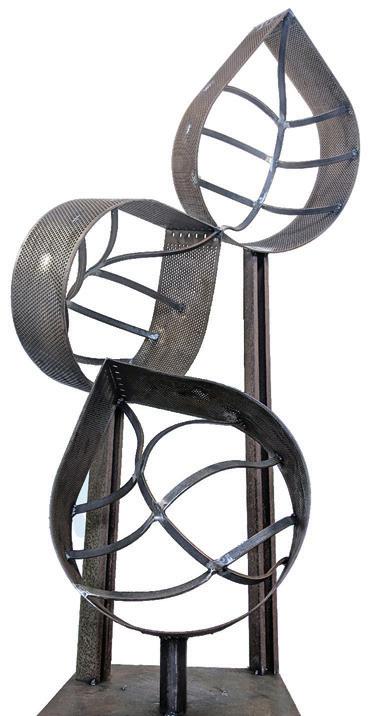
Over the years, Jenny’s work has evolved, particularly after the loss of her brother in 2010. This personal tragedy led her to create larger, stronger, and more emotionally resonant pieces. Her art has become a way to connect with others who have experienced loss, fostering a shared sense of healing.
Jenny’s work is displayed throughout the Pacific Northwest, including notable installations such as Hughes Water Gardens. She is excited about a new permanent sculpture project in Oregon City, which she was awarded through the Oregon City Arts Commission. This significant piece, “Elemental Love,” will be installed near the historic McLoughlin House and City Hall at the intersection of Seventh and Center on December 7th, 2024.
Once Jenny gets more power in her shop, she will expand her artistic reach by offering welding classes to teach others the craft that has brought her so much fulfillment. To learn more about Jenny Ellsworth’s extraordinary work, visit www.fairyforge.com or follow her on Instagram @fairy_forge_.












By Robert Matsumura, Active Media
Every year around December 21st in the Northern Hemisphere, the winter solstice occurs, marking the shortest day and longest night of the year. Through the centuries this annual cosmic event has inspired stories, myths, and celebrations, blending elements of nature, light, and spirituality in traditions shared by numerous cultures across the globe. At the heart of these ancient rituals and festivities is the summer solstice’s association with birth and renewal, a seasonal change in nature that heralds the coming of spring and an end to the darkness of winter.
Before calendars and clocks were invented, people lived in accordance with the sun’s cycles. In a sun-centric world the solstice served as a pivotal marker in their agricultural, spiritual, and social lives. For many cultures, the winter solstice was viewed with trepidation — a time when the world could fall into chaos, a dark period where the sun was symbolically at its weakest — before returning to glory as the days lengthened. The summer solstice was a reminder of the sun’s return, bringing warmth, growth, and sustenance. Elaborate feasts were often held, sacred rituals performed, and fires lit to encourage the rebirth of the sun.

One of the most famous winter solstice traditions took place in Northern Europe where ancient Germanic and Norse tribes celebrated Yule. A festival that honored the Norse gods, particularly Odin, Yule focuses upon the rebirth of the sun. Evergreens, symbolizing eternal life, were central to Yule, and homes were decorated with boughs of holly, ivy, and mistletoe — plants resistant to winter’s chill. Over time, these traditions blended with Christian customs, resulting in today’s wreaths, garlands, and Christmas trees.
Across the Roman Empire, the solstice celebration known as Saturnalia was a time of joyous revelry. Saturnalia honored Saturn, the god of agriculture and time with festivities that flipped societal norms. During Saturnalia, carnivallike chaos reigned — slaves could become masters for a day, gambling was permitted, and everyone feasted. It was a season of merriment, gift-giving, and the relaxation of social rules. Everyone — rich and poor alike — could partake in the festivities. Saturnalia had a profound influence on later Christmas celebrations, particularly the communal feasting, exchanging of gifts, and sense of goodwill.
The British Isles: Stonehenge and the Celtic Solstice

In East Asia, the Dongzhi Festival signals the arrival of winter and the rebirth of yang energy. Dongzhi, meaning “extreme of winter,” derives from the concept of yin and yang — the cosmic balance of dark and light. While the winter solstice represents the darkest day, it also signifies the gradual rise of yang energy and the light.
In the British Isles, Stonehenge remains one of the most iconic sites associated with the winter solstice. Constructed thousands of years ago, this mysterious stone circle aligns perfectly with the solstice sunrise, drawing crowds of onlookers annually to witness the event. Though Stonehenge’s origin is unknown, it’s clear that its creators were deeply attuned to the celestial rhythms, and utilized the monument to mark important seasonal shifts.
In the Celtic world, the summer solstice was a time when the Oak King triumphed over the Holly King in their eternal battle for earth’s light. The Oak King, symbolizing the waxing sun, would begin to grow stronger with the longer days, heralding the return of spring. Rituals involved bonfires, feasts, and offerings to the gods in gratitude for the return of the light.
In China, Dongzhi is a time for family reunions and feasting on specific culinary favorites such as tangyuan — glutinous rice balls served in sweet syrup, symbolizing family unity. In southern China, dumplings are also popular and are believed to protect against the winter cold. Dongzhi is also a time for reconnecting with ancestors, and the belief is that one’s good fortune and health in the coming year depends on harmony between the living and the deceased.
For many Indigenous cultures of North America, summer solstice rituals were held to celebrate the return of the sun. The Pueblo peoples celebrated Soyal with purification rituals and dances meant to awaken the sun from its winter sleep. Central to the ceremony is the creation of kachina dolls — symbolic representations of deities or spirits — that play a crucial role in the life cycle.
Far to the North, the Inuit people of Alaska and Canada honored the summer solstice with a festival called Quviasukvik, a time when families convened to share food and stories, reflect on the past and anticipate the return of the sun. As a people accustomed to harsh Arctic winters, the summer solstice indeed was cause for celebration. Longer days and the return of the sun literally represented survival in the brutal conditions of the North.
In the Southern Hemisphere, the summer solstice occurs in June. Among the Incas, Inti Raymi, the festival of the sun was held in honor of Inti, the sun god. The Incas, who revered the sun as their primary deity, performed elaborate ceremonies in honor of Inti to ensure good harvests in the coming year. At the heart of the solstice celebrations was the city of Cusco, where ritual sacrifices, offerings and dances were performed to demonstrate the people’s gratitude and reverence for the sun’s critical role in sustaining life. Modern day celebrations honoring Inti are held to this day.
While solstice celebrations have evolved over the centuries, themes of light, rebirth, and reflection are timeless. From spiritual gatherings to cozy times around the hearth, the winter solstice invites us to anticipate the return of the sun and all that it brings to the earth. So as the winter solstice rolls around, take a moment to slow down, reflect, and find balance, like our ancestors once did. On the darkest of days, the solstice is a celebration of endurance, hope, and abundance that light makes possible in our lives.
By Robert Matsumura, Active Media
Traditionally, Christmas evokes images of Santa Claus, twinkling lights, stuffed stockings over the hearth and gifts beneath the tree. In the heart of the Alps, however, another figure lurks in the shadows of the holiday season, a horned and hairy creature that has for centuries been a part of Central European folklore — Krampus.
The origins of Krampus reach back to pre-Christian Alpine traditions. The name Krampus derives from the German word krampen, meaning “claw.” Rooted in ancient Norse and Germanic pagan customs, specifically those centered around winter solstice celebrations, Krampus was a horned beast with shaggy fur and a devilish appearance who roamed the land during the dark of winter. With the onset of Christianity however, devilish figures were frowned upon, so rather than eliminating Krampus altogether, he was reinterpreted as a cautionary figure who would scare children into proper behavior, working alongside the benevolent St. Nicholas.
Krampus and St. Nicholas:
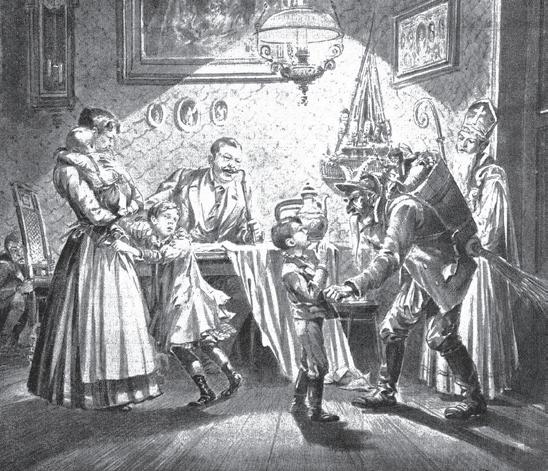
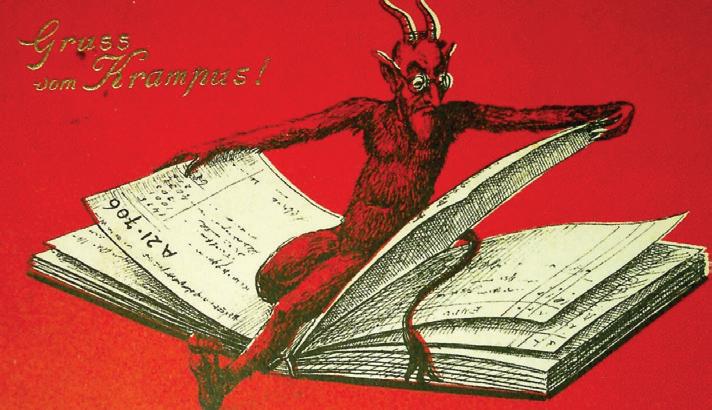
For every well-behaved child a troublemaker existed, and this was where Krampus came in. While St. Nicholas rewarded the good children with presents and treats, Krampus dealt with the naughty ones with spankings and even hauling them away to the underworld in some cases. The duality of St. Nicholas and Krampus mirrored the Christian concept of heaven and hell — good and evil — where virtue is rewarded and vice is punished.
Krampusnacht:
On the eve of St. Nicholas Day, December 5, Krampusnacht — “Krampus Night” is celebrated across Central Europe.
On this night, men don terrifying costumes and roam the streets as Krampus, scaring children (and sometimes adults) in Krampus parades known as Krampuslauf. These days, Krampus has expanded beyond his traditional Alpine roots. Global media, films and TV shows have embraced Krampus, and in the United States, Krampus has become something of a cult figure. Krampusthemed events, parties and even horror films have reintroduced him to a new generation.
Much of the appeal of Krampus lies in his contrast to the commercialized image of Christmas in modern culture. Krampus represents the balance between light and dark, joy and fear — a reminder that the holiday season, while full of cheer, also contains an element of mystery and unease.
Today Krampus continues to be popular around the world, demonstrating the power of folklore and its ability to evolve over time. Whether you find him fascinating, frightful or both, there’s no denying that Krampus has carved out a unique place in holiday history — one where the naughty children had better beware!


“Now I have a machine gun. Ho ho ho.” Yes, Die Hard is a Christmas movie and this is not up for debate — it’s objectively true. The movie takes place during a holiday office party, it has Christmas music, John’s wife is named Holly, there are presents, John wears a Santa hat, it snows. Millions of Americans watch this movie on Christmas Eve every year, and most polls skew in favor of it being a Christmas movie. So there. And with all the action, it’s one heck of a Christmas movie!
The infamous John McClane (Bruce Willis), a NYC cop, is visiting his estranged wife Holly (Bonnie Bedelia) and two daughters in LA on Christmas Eve. He joins his wife at her holiday office party when terrorists suddenly take everyone hostage, and no one else can save them but John! Also starring Alan Rickman, Paul Gleason, Willam Atherton, and more. It’s violent and exciting, funny, full of foul language, and rated R, so it’s ok for teens and adults only.
“Keep the change, ya filthy animal.” Probably the most iconic Christmas movie ever made, Home Alone is jam-packed full of hilarious quotes, slapstick and action, and remains an unmistakably heartwarming family movie. If you’ve lived under a rock for 35 years and don’t know, the story follows Kevin McCallister (Macaulay Culkin) who’s left home alone after his family forgets him in Chicago when they travel to Paris for Christmas. Being a bit of a black sheep and the youngest in a large family, Kevin welcomes this time alone when his wish comes true — that is, until “Wet Bandit” burglars Harry (Joe Pesci) and Marv (Daniel Stern) start scoping out his house. From there, Kevin develops an elaborate plan to defend his home while trying to remain self-sufficient without his family, learning many lessons along the way. Also starring Catherine O’Hara, John Heard, Kieran Culkin, John Candy, and more. One of my all-time favs, this is rated PG for slapstick violence and ok for older kids. And if you love this, Home Alone 2: Lost in New York is also fantastic.



“Dear Santa Claus, How have you been? Did you have a nice summer?” A Charlie Brown Christmas is a timeless holiday movie that’s perfect for families, offering a heartwarming tale about the true meaning of Christmas. This cartoon follows Charlie Brown as he wrestles with the commercialization of the holiday season, feeling sad despite all the holiday fun happening around him. With the help of his friends and a scrawny little Christmas tree, Charlie discovers the joy and love of togetherness. What makes A Charlie Brown Christmas so special is its universality — the story is sweet and simple, with humor and themes of kindness and reflection that both kids and adults will appreciate. Also, not to be forgotten is the jazz-infused soundtrack by Vince Guaraldi Trio, which adds an extra layer of nostalgia. The movie is unrated but views like a G — wholesome enough for the whole family.
Stream these movies where available, or rent from your local movie store, library or rental kiosk.
By Robert Matsumura, Active Media
Have you ever stood in the wine aisle of your local grocers during the holidays, baffled as to the appropriate wine for meals featuring poultry, beef, pork, or seafood — not to mention the array of appetizers and side dishes? Our guide below will help simplify this process with six wines flexible enough to complement your holiday cuisines from autumn through winter.
Sauvignon Blanc
Also referred to as “Sancerre” in France, this medium-light bodied white wine is a winner. It features a crisp, herbal profile perfect for turkey, goose, chicken, or seafood.
Chardonnay
A more full-bodied white, Chardonnay is an excellent partner to fish or roast poultry. Likewise, Chardonnay pairs beautifully with beef, should you have guests who prefer to drink only white. In this case opt for an oak-forward Chardonnay, as it will enhance the robust flavors of the beef.
Not as well-known as other whites, Viognier is a fantastic partner to roast turkey and other poultry dishes. Rounded in body with undertones of honey and spice, some of the best Viognier comes from the Rhone region of France, as well as Australia and South Africa. Like Chardonnay, Viognier can also play well with beef.

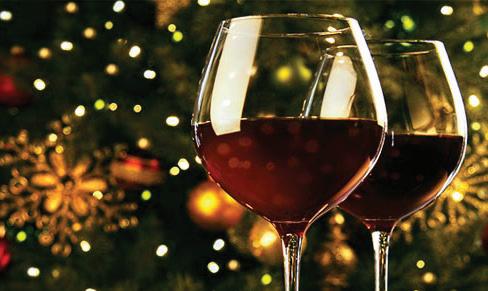
With its bright acidity and versatile nature, Pinot Noir is one of the best choices for the holidays. It excels across the board with poultry, pork, and hearty beef dishes. The Pacific Northwest and California offer many solid choices with fruit-forward characteristics sure to please even the most discriminating palates.
Red Zinfandel has long been considered a great Thanksgiving wine for its ability to compliment turkey while also blending well with cranberry sauce and other sides. Its fruit-forward profile, along with notes of cinnamon, clove and vanilla evoke the holiday season. Zinfandel also performs admirably with beef and pork, should your holiday dinner include a roast or baked ham.
Cabernet Sauvignon, the “King of Reds,” is the ultimate pairing for beef. Cabernet’s dark, full-bodied character, often reminiscent of currants and black cherry, enhances the hearty flavors of such entrees as prime rib or crown roast.
Another fabulous red wine to pair with beef is Syrah (known as Shiraz in Australia). This luscious red bursts with complex flavors from pepper to cherry, smoky to floral. Syrah, made in France’s Rhone Valley, is generally known more for its elegance and complexity, while Shiraz is bolder and more fruit-driven. If beef is on the menu, you can’t go wrong with Syrah.
Let’s say you’ve been invited to a holiday event and wish to bring a bottle of wine, but you’re uncertain of the menu. The safest choices might be Pinot Noir or Chardonnay. Both wines have versatility across a broad spectrum of entrees, and will be welcome additions to the holiday table. All of these featured wines are readily available at your local markets, where helpful staff can assist you in determining the best selections and values for your particular budget.
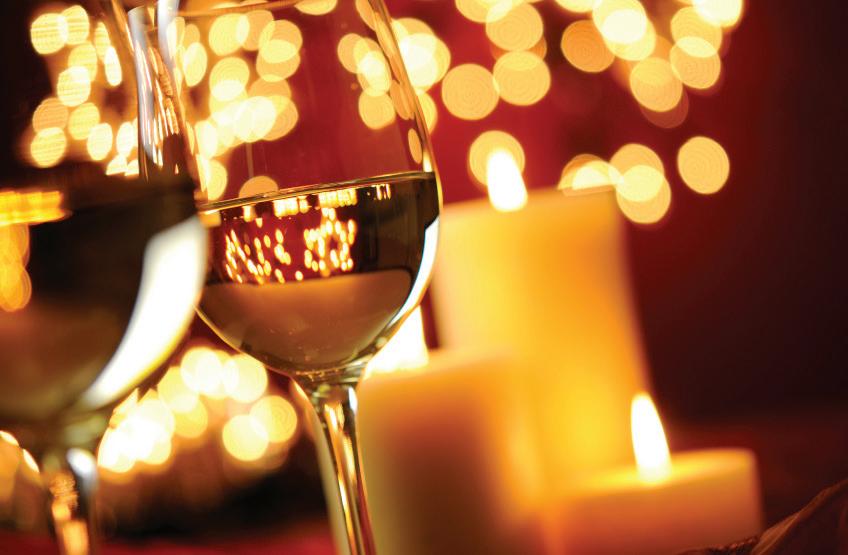
As the holidays roll around, entertaining family and friends takes center stage. For many of us the holiday cheese board is a star player in the food festivities, yet with the plethora of choices available at local markets, assembling it can prove a bit daunting.
Basic Strategy
For presentation purposes, select cheeses of different colors, shapes, and sizes. When calculating the amount of cheese to purchase, three ounces per guest is a solid guideline. Thus, if you’re serving three types of cheese and entertaining 12 guests, you should buy at least 12 ounces of each type. If other appetizers will be served, the amount of cheese can be reduced to two ounces. In general, three varieties of cheese—a hard, a semi-hard, and a soft—will provide ample variety for most events.
Aged Gouda
This Dutch cheese is always a strong player on any cheese board. If you prefer a sharper, nuttier flavor with those delicious salty bits, opt for a Gouda aged at least 10 months. Many of the premier Goudas will be aged up to 18 months or more. Top brands include Beemster, Parrano, and Rembrandt.
Manchego
A full-bodied cheese made from sheep’s milk, this Spanish cheese from the La Mancha region is creamy yet nutty with toasty nuances. Aged Manchego has a wonderful granular texture much like aged Gouda, and will be a superb compliment to fruit or meats such as prosciutto, salami, and capicola.


A good aged cheddar is always a welcome member of any cheese board. American, English, and Irish cheddars are all fantastic choices, providing slightly different characteristics. In general, the longer a cheddar is aged the sharper the flavor. Tillamook, Kerrygold, and Cabot are all fine choices.
Fontina
Originally from Italy, this versatile cheese features a sweet and pungent character nuanced with tones of butter and roasted nuts. It is rich and creamy with an intensity of flavor that increases with age. Sartori, Stella, and Boar’s Head are all excellent brands.
Comté
One of the most popular French cheeses, this creamy, mil cheese is a pleasing addition to any cheese board as it blends well with bolder flavored meats and preserves while adding a luxuri us undertone. Jura Flore, Fort Rousses, and St. Antoine are all quality brands.
Brie
Soft and creamy, with a musky complexion, this French cheese is spreadable and delicious slathered on bread or crackers. Try it warmed and melted. Excellent brands are President, La Bonne Vie, or Dietz and Watson. Marin French is a quality domestic brand.
Another soft spreadable cheese that hails from the Normandy region of France is Camembert. Not quite as creamy as Brie, it is less pungent, and pale yellow in color. Often celebrated as the most popular cheese of France.
For festive additions consider cranberry cheeses such as Wensleydale or Celebrity. Crave truffles? Explore the many truffled cheeses on the market such as truffled Brie and Gouda.






